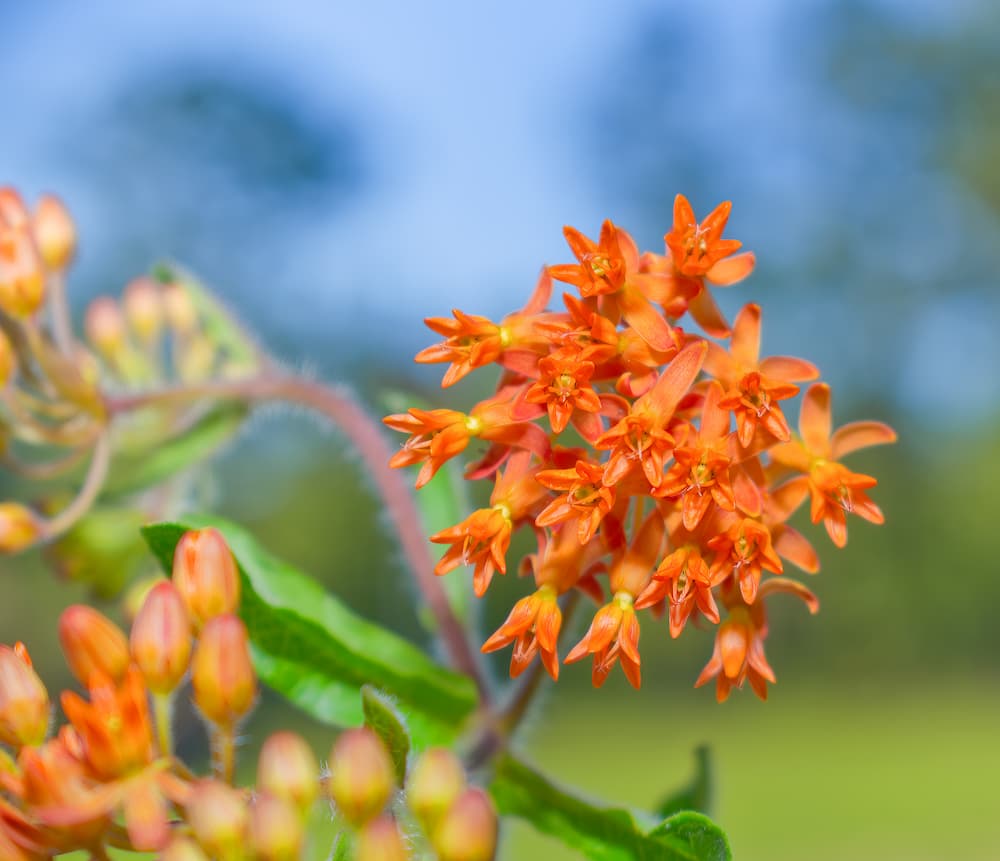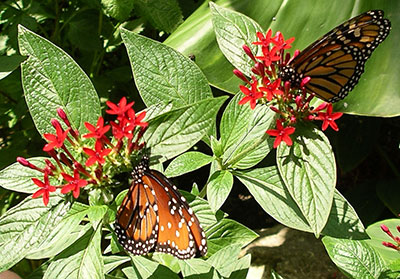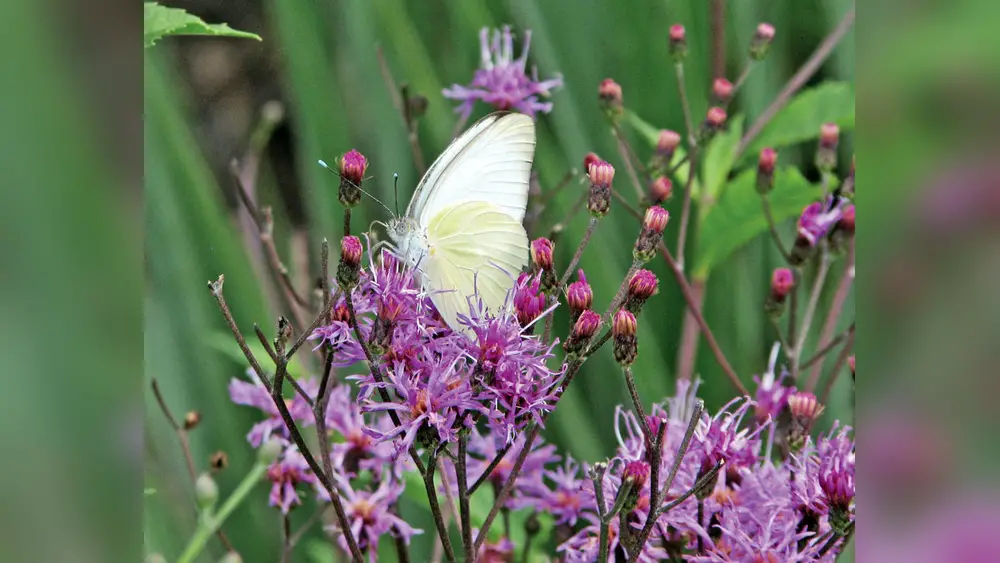If you want to attract vibrant butterflies to your Florida garden, choosing the right plants is key. Butterflies don’t just bring beauty—they play an important role in your garden’s health.
But not all plants are created equal when it comes to supporting these delicate creatures. You might be surprised to learn which plants truly help butterflies thrive, and which popular choices could actually harm local ecosystems. In this guide, you’ll discover the best butterfly plants for Florida’s unique climate—plants that will turn your outdoor space into a buzzing haven of color and life.
Ready to create a butterfly-friendly garden that’s both beautiful and beneficial? Keep reading to find out how.

Credit: monarchbutterflygarden.net
Native Butterfly Host Plants
Native butterfly host plants are essential for supporting Florida’s butterfly populations. These plants provide food and shelter for butterfly larvae. They help butterflies complete their life cycle and maintain healthy populations. Choosing native plants also benefits local ecosystems and reduces the need for fertilizers and pesticides.
Milkweed Varieties
Milkweed is the key host plant for monarch butterflies. It provides leaves where monarch caterpillars feed and grow. Florida has several milkweed types, including tropical milkweed and swamp milkweed. These varieties thrive in Florida’s climate and attract many butterflies.
Passionflower Vines
Passionflower vines are the main host plants for gulf fritillary butterflies. Their leaves serve as food for the caterpillars. These vines grow well in Florida and produce beautiful flowers. They add color and support butterfly life cycles.
Cassia Shrubs
Cassia shrubs support sulphur butterfly larvae. These shrubs have bright yellow flowers that attract adult butterflies. Cassia plants grow easily in Florida’s warm weather. They also provide shelter for young caterpillars.
Dill And Fennel
Dill and fennel are popular host plants for black swallowtail butterflies. Caterpillars feed on their feathery leaves. These herbs grow well in Florida gardens. They offer food and help attract butterflies to your yard.
Citrus Trees
Citrus trees serve as host plants for giant swallowtail butterflies. The caterpillars eat the leaves and flowers of these trees. Florida’s orange and grapefruit trees are perfect for supporting these butterflies. Citrus trees also add beauty and shade to gardens.
Pipevine Species
Pipevine plants are vital for the pipevine swallowtail butterfly. Their leaves provide food for the caterpillars. These plants grow well in Florida’s environment. Pipevines also produce unique flowers that attract adult butterflies.

Credit: www.plantprofessionals.com
Popular Butterfly Bushes In Florida
Butterfly bushes add color and life to Florida gardens. They attract many butterflies and pollinators. These bushes thrive in Florida’s warm climate and bloom for months. Their bright flowers create a beautiful and lively space. Several popular varieties stand out for their unique colors and growth habits.
Miss Molly Butterfly Bush
Miss Molly Butterfly Bush shows soft pink flowers. It grows well in Florida’s sun and heat. Butterflies love its fragrant blooms. This bush stays compact, making it perfect for small gardens. It blooms from summer to fall, providing long-lasting beauty.
Triple Treat Butterfly Bush
Triple Treat Butterfly Bush offers three flower colors on one plant. Purple, lavender, and white blooms appear together. This mix attracts many types of butterflies. It is heat-tolerant and resists diseases. The bush grows tall and full, creating a striking garden feature.
Pink Delight Butterfly Bush
Pink Delight Butterfly Bush has bright, deep pink flowers. Its long flower spikes bloom from summer through fall. Butterflies find it very attractive. This bush grows fast and needs little care. It adds a cheerful splash of color to any garden.
Rainbow Butterfly Bush
Rainbow Butterfly Bush shows a variety of flower colors in one plant. Shades range from pink to purple to white. It draws many butterflies and hummingbirds. This bush tolerates heat and drought well. Its colorful blooms brighten any Florida landscape.
Midnight Butterfly Bush
Midnight Butterfly Bush has deep purple, almost black flowers. The dark blooms create a dramatic look. It thrives in Florida’s warm climate. Butterflies are drawn to its sweet scent. This bush adds a unique touch to butterfly gardens.
Benefits Of Butterfly Plants
Butterfly plants offer many benefits for gardens in Florida. They support local wildlife and improve garden health. These plants attract butterflies and other pollinators. They bring beauty and color to outdoor spaces. Many butterfly plants also require little care, making them easy to grow.
Attracting Adult Butterflies
Butterfly plants provide nectar that adult butterflies love. Brightly colored flowers catch butterflies’ attention quickly. They create a welcoming space for butterflies to rest and feed. Growing these plants helps increase butterfly visits to your garden.
Supporting Pollinators
Butterfly plants support many pollinators besides butterflies. Bees, hummingbirds, and other insects benefit from these flowers. Pollinators help plants reproduce by spreading pollen. Healthy pollinator populations improve overall garden health and crop yields.
Adding Colorful Blooms
Butterfly plants brighten gardens with vivid colors. Orange, yellow, pink, and purple flowers are common. These blooms add visual interest throughout the growing season. They make any outdoor space more lively and inviting.
Low Maintenance Options
Many butterfly plants thrive with little care in Florida. They tolerate heat, humidity, and occasional drought. These plants need minimal watering and pruning. Choosing low maintenance options saves time and effort in gardening.
Risks Of Invasive Butterfly Bushes
Butterfly bushes are popular for attracting butterflies in Florida gardens. Some types, though, pose risks to local ecosystems. Invasive butterfly bushes spread quickly and can harm native plants. Understanding these risks helps gardeners make better choices.
Aggressive Spreading
Invasive butterfly bushes grow fast and spread beyond gardens. Their seeds travel easily by wind and water. This rapid growth crowds out other plants. Once established, they are hard to remove. This spreading disrupts the balance of natural areas.
Impact On Native Plants
Invasive bushes compete with native plants for space and nutrients. They often dominate, reducing native plant populations. This loss affects animals relying on native plants for food and shelter. The diversity of Florida’s plant life decreases as invasives take over.
Effect On Butterfly Life Cycles
Butterflies depend on native plants for laying eggs and feeding caterpillars. Invasive bushes do not support these needs well. This mismatch can lower butterfly survival rates. Over time, butterfly numbers may decline due to habitat loss.
Invasive Species Regulations
Florida has rules to control invasive plant species. Some butterfly bushes are banned or restricted. Gardeners must follow these laws to protect the environment. Using native or non-invasive plants supports local wildlife and habitats.
Designing A Butterfly Garden In Florida
Designing a butterfly garden in Florida offers a chance to create a lively space full of color and life. The warm climate supports many butterfly species. A well-planned garden invites butterflies to visit and stay. Every plant and layout choice impacts butterfly activity. Gardening with butterflies in mind means understanding their needs.
Choosing Native Plants
Native plants thrive in Florida’s climate and soil. They provide the best food and shelter for local butterflies. Select plants like milkweed, passionflower, and coontie. These plants support butterfly life cycles naturally. Avoid exotic plants that may not suit local butterflies. Native plants reduce garden care and attract more butterflies.
Creating Host Plant Zones
Host plants serve as food for butterfly larvae. Grouping these plants creates zones for caterpillars. Milkweed is a key host for monarch butterflies. Passionflower supports gulf fritillary caterpillars. Designate areas with different host plants for various species. Zones help caterpillars grow safely into butterflies.
Incorporating Nectar Sources
Adult butterflies need nectar-rich flowers to feed. Include plants like lantana, pentas, and butterfly bush. Choose flowers with bright colors and sweet scents. Plant flowers in clusters to attract more butterflies. Offer blooms throughout the year for constant nectar supply. Nectar plants keep butterflies visiting your garden.
Maintaining Garden Health
Healthy gardens attract and support more butterflies. Avoid pesticides and chemicals that harm insects. Use natural pest control methods instead. Water plants regularly but avoid overwatering. Remove weeds and dead plants to keep the area clean. Healthy soil and plants create a welcoming butterfly habitat.
Seasonal Care Tips
Seasonal care plays a vital role in keeping butterfly plants healthy and vibrant in Florida. Proper care ensures these plants attract and support more butterflies throughout the year. Understanding how to adjust care with the seasons helps plants thrive in Florida’s warm climate.
Planting Times
Plant butterfly species in early spring or fall for best results. These times avoid the hottest summer months and give plants time to establish roots. Fall planting allows plants to grow strong before the heat arrives. Avoid planting during peak summer to reduce stress on young plants.
Watering Practices
Water butterfly plants deeply but less often to encourage strong roots. Florida’s heat may require watering two to three times a week during dry spells. Morning watering helps prevent fungal diseases. Avoid overwatering as it can cause root rot and harm the plants.
Pruning For Growth
Prune butterfly plants after blooming to promote new growth. Remove dead or damaged stems to keep plants healthy. Light pruning encourages bushier plants that attract more butterflies. Regular pruning also helps maintain shape and size in small garden spaces.
Protecting From Pests
Check plants regularly for common pests like aphids and caterpillars. Use gentle methods such as handpicking or spraying water to remove pests. Encourage natural predators like ladybugs to control harmful insects. Avoid harsh chemicals to protect butterflies and other beneficial insects.

Credit: gardeningsolutions.ifas.ufl.edu
Frequently Asked Questions
What Is The Best Plant For Butterflies In Florida?
Milkweed is the best plant for butterflies in Florida, especially monarchs. Passionflower and cassia also attract native butterfly species.
What Are The Disadvantages Of Butterfly Bushes?
Butterfly bushes spread aggressively, outcompete native plants, and disrupt ecosystems. They don’t support caterpillars, harming butterfly life cycles.
Can Butterfly Bushes Be Planted In Fl?
Butterfly bushes can grow in Florida’s climate but may become invasive. Choose native plants for better butterfly support.
What Plant Attracts Butterflies The Most?
Milkweed attracts the most butterflies, especially monarchs, by providing nectar and serving as a vital host plant for caterpillars.
Conclusion
Choosing the right butterfly plants helps create a vibrant garden in Florida. Native plants like milkweed and passionflower attract many butterfly species. These plants offer food and shelter for butterflies throughout their life cycle. Planting a variety ensures butterflies visit your garden often.
Remember to avoid invasive species that harm local ecosystems. Enjoy watching colorful butterflies flutter around your beautiful garden. Small efforts bring big rewards in supporting nature’s delicate balance. Start planting today to see nature’s wonders up close.

